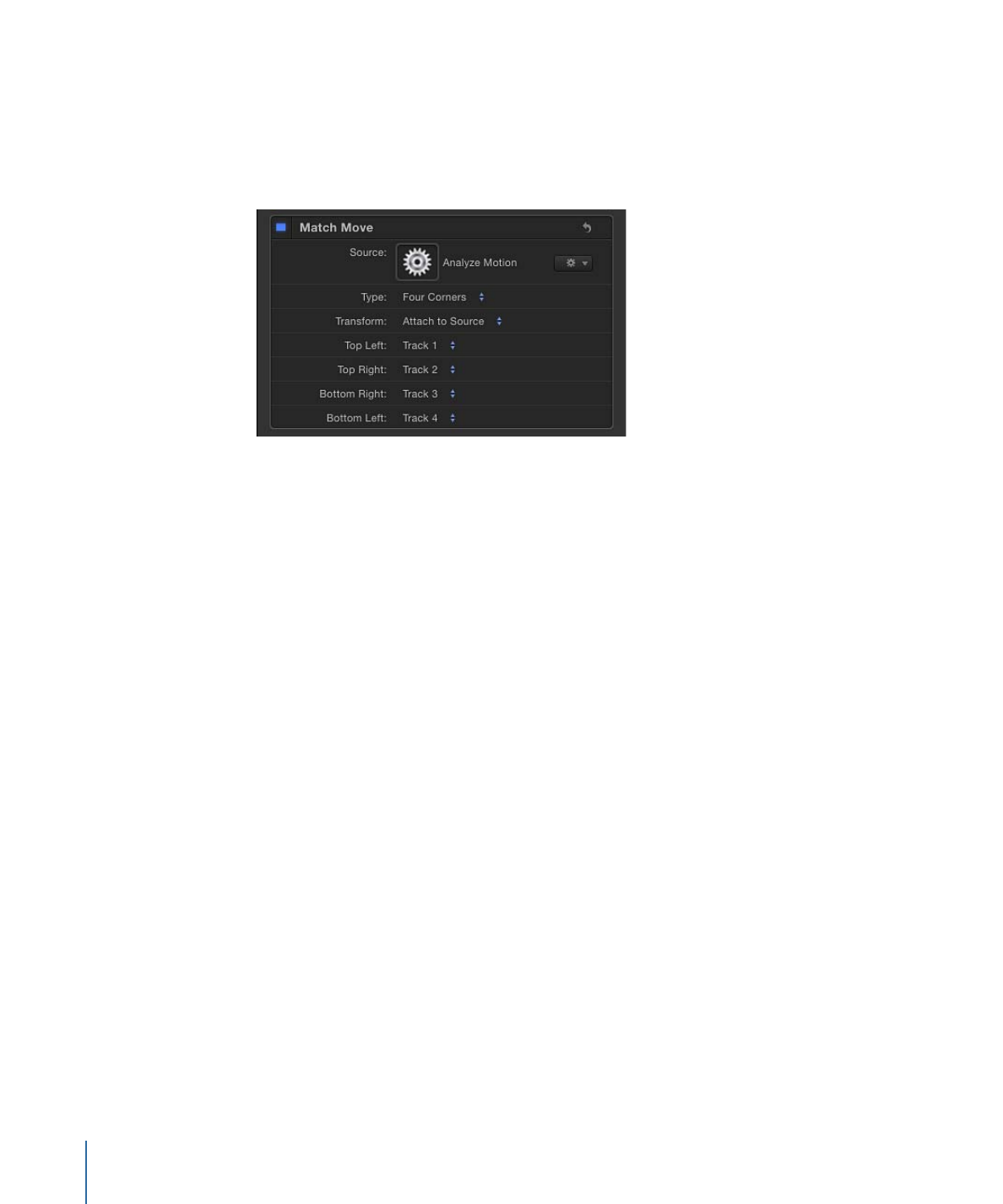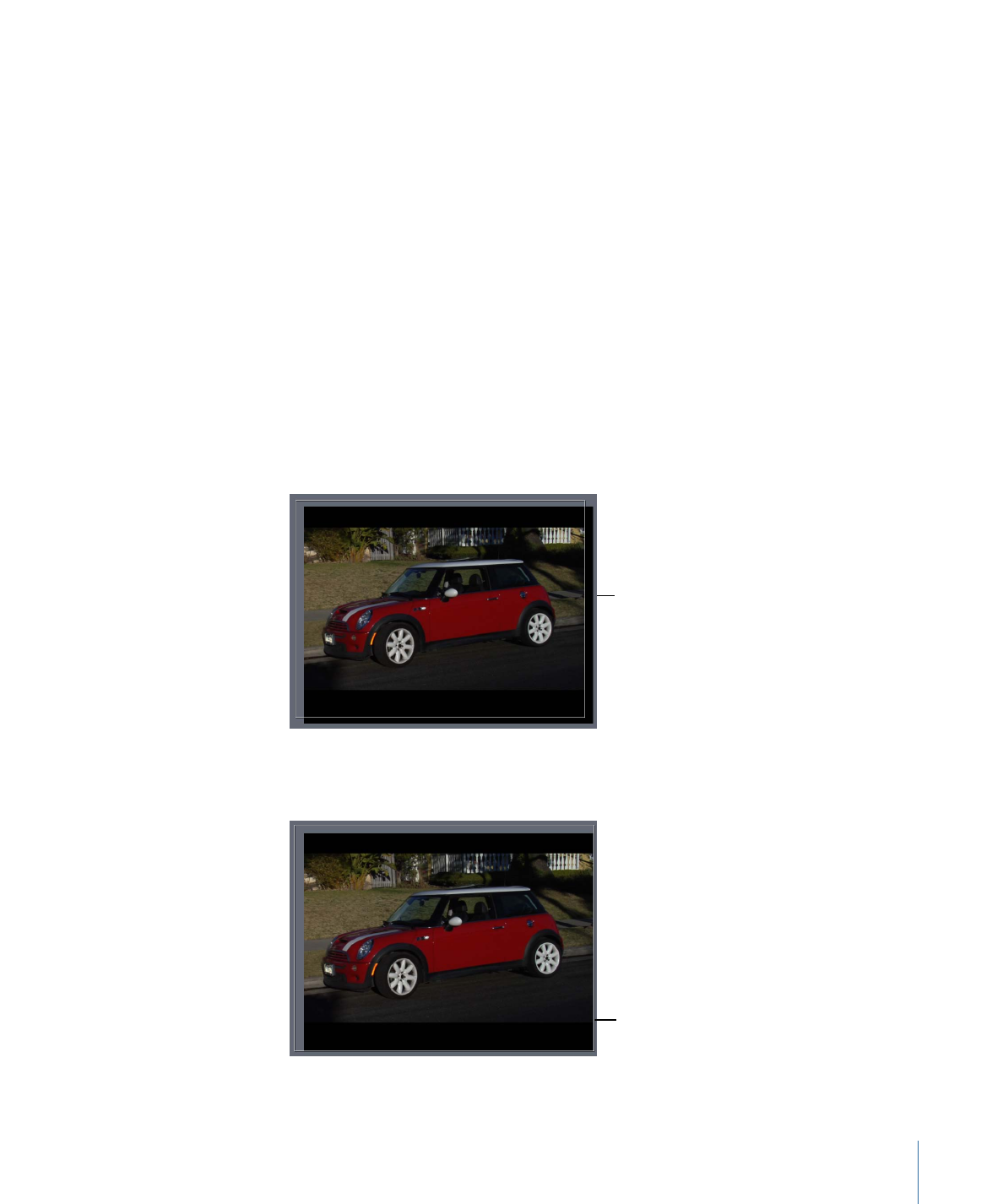
Stabilize Workflow
This section provides an overview of the Stabilize tracking behavior, used to smooth shaky
motion in a movie or image sequence. For a full description of Stabilize parameters, see
Stabilize Controls
.
With the Stabilize behavior, there are three ways to analyze a clip:
• Use the default advanced motion analysis technique that evaluates the entire frame
of a clip at once to extract movement data without onscreen trackers.
• Use onscreen trackers that analyze a reference pattern (a small group of pixels) in the
Canvas. These are the same trackers used by the Match Move and Analyze Motion
behaviors.
• Use a combination of the advanced motion analysis and onscreen trackers.
Important:
For information on using onscreen trackers with the Stabilize behavior, see
Adding Trackers to the Stabilization
.
After the motion analysis is complete, you can apply it in either of two ways. The clip can
be smoothed, eliminating unwanted jitter while maintaining the general motion of the
camera, or the clip can be locked, stabilizing the subject. The smoothing can affect
translation, rotation, or scale, making it more flexible for some operations than the other
tracking behaviors.
The Stabilize behavior is primarily useful for removing unwanted trembling from
less-than-stable crane or jib arm moves, eliminating teetering from handheld walking
shots, or reducing vibrations in automotive shots.
1310
Chapter 22
Motion Tracking

Note: Motion blur present in the image remains, even though the subject in the shot is
smoothed or locked.
To stabilize a clip using the Stabilize behavior
1
Apply a Stabilize behavior to the clip you want to stabilize.
Note: Unlike other behavior workflows, the Stabilize behavior’s automatic mode analyzes
the entire clip from its first frame, rather than from the current playhead position.
2
Set the options for the analysis:
a
Choose an option from the Method pop-up menu in the HUD or Behaviors Inspector:
• Choose Stabilize to lock down an image, removing problems such as camera shake.
• Choose Smooth to smooth camera movement in the clip.
b
Choose an option from the Borders pop-up menu:
• Choose Normal to maintain the size of the stabilized footage. Resulting
transformations made to the stabilized image may cause moving black borders to
appear around the edges of the clip.
Normal borders maintain
the size of the stabilized
clip but create black
borders around the
clip’s edges.
• Choose Zoom to expand the clip to the full size of the Canvas. This prevents black
borders from appearing around the edges of the stabilized clip.
Zoomed borders scale
the stabilized clip so
the clip does not move
away from the edge
of the Canvas.
1311
Chapter 22
Motion Tracking

Note: For suggestions on correcting the black borders, see
Removing Black Borders
Introduced by Stabilizing
.
c
Choose an option from the Direction pop-up menu:
• Choose Horizontal and Vertical to apply the stabilize transformation to the X and Y
dimensions.
• Choose Horizontal to apply the stabilize transformation to the X dimension.
• Choose Vertical to apply the stabilize transformation to the Y dimension.
d
Enable or disable the Adjust options:
• Turn on Position to apply the analyzed position data to the clip. (The X and Y position
changes in the footage are smoothed or stabilized.) To stabilize the X and Y position
of the shot and leave scale or rotation changes intact, turn on Position and turn off
Scale and Rotation.
• Turn on Scale to apply any analyzed scale data to the clip. (Scale changes in the
footage are smoothed or stabilized.) To stabilize or smooth changes in scale and
leave position or rotation changes intact, turn on Scale and turn off Position and
Rotation.
• Turn on Rotation to apply analyzed rotation data to the clip. (Changes in the rotation
of the footage are smoothed or stabilized.) To stabilize or smooth changes in rotation
in the shot and leave position or scale changes intact, turn on Rotation and turn off
Position and Scale.
For the smoothest result, turn on all three Adjust options (Position, Scale, and Rotation).
Note: The Scale option is not related to the Zoom option in the Borders pop-up menu.
Note: You can change the Method, Borders, Direction, and Adjust parameters before
or after the clip is analyzed.
3
Click the Analyze button in the HUD or Behaviors Inspector.
Note: The clip is stabilized according to defined parameters. Unlike Motion trackers, the
default Stabilize analysis does not create keyframes in the Keyframe Editor. However, the
stabilized object’s transformation can be converted to keyframes. For more information,
see
Converting Tracks to Keyframes
. When correlation trackers are added to and analyzed
with the Stabilize behavior, keyframes are created.
For more information on correcting problems associated with stabilization, see
Troubleshooting Stabilizing Effects
.